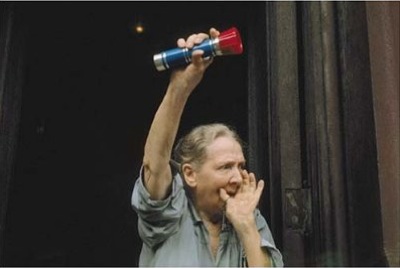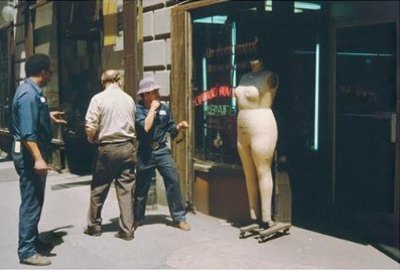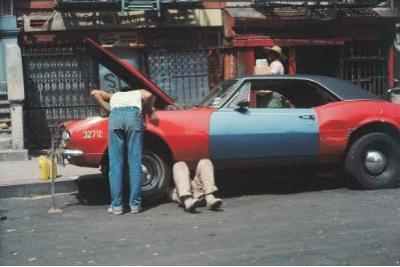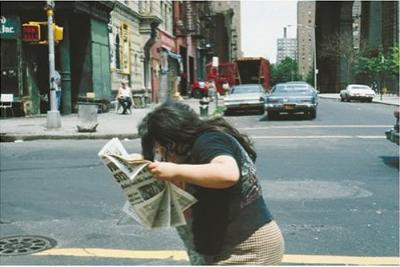Helen Levitt grew up in Brooklyn. Dropping out of high school, she taught herself photography while working for a commercial photographer. While teaching some classes in art to children in 1937, Levitt became intrigued with the transitory chalk drawings that were part of the New York children’s street culture of the time. She purchased a Leica camera and began to photograph these works as well as the children who made them. The resulting photographs were ultimately published in 1987 as In The Street: chalk drawings and messages, New York City 1938-1948.
She associated with Walker Evans in 1938 and 1939. In 1943 Edward Steichen curated her first solo exhibition “Helen Levitt: Photographs of Children” at the Museum of Modern Art. She subsequently began to find press work as a documentary photographer.
In 1959 and 1960, Levitt received two Guggenheim Foundation grants to take color photographs on the streets of New York, and she returned to still photography. In 1965 she published her first major collection, A Way of Seeing. Much of her work in color from the 1960s was stolen in a 1970 burglary of her East 13th Street apartment. The remaining photos, and others taken in the following years, can be seen in the 2005 book Slide Show: The Color Photographs of Helen Levitt. In 1976 she was a Photography Fellow of the National Endowment for the Arts.
In the late 1940s Levitt made two documentary films with Janice Loeb and James Agee: In the Street (1948) and The Quiet One (1948). Levitt, along with Loeb and Sidney Meyers, received an Academy Award nomination for the screenplay of The Quiet One. Levitt was active in film making for nearly 25 years; her final film credit is as an editor for John Cohen’s documentary The End of an Old Song (1972). Levitt’s other film credits include the cinematography on The Savage Eye (1960), which was produced by Ben Maddow, Meyers, and Joseph Strick, and also as an assistant director for Strick and Maddow’s film version of Genet’s play The Balcony (1963). In her biographical essay, Maria Hambourg writes that Levitt, “has all but disinherited this part of her work.”
She remained active as a photographer for nearly 70 years and lived in New York City. New York’s “visual poet laureate” was notoriously private and publicity shy.



















